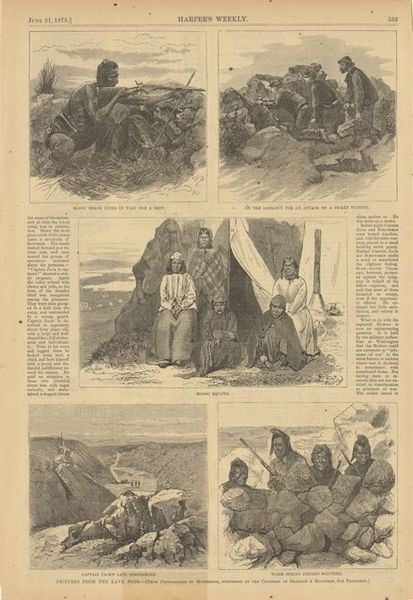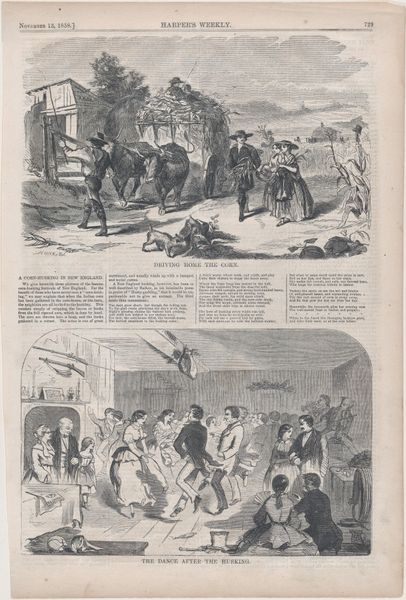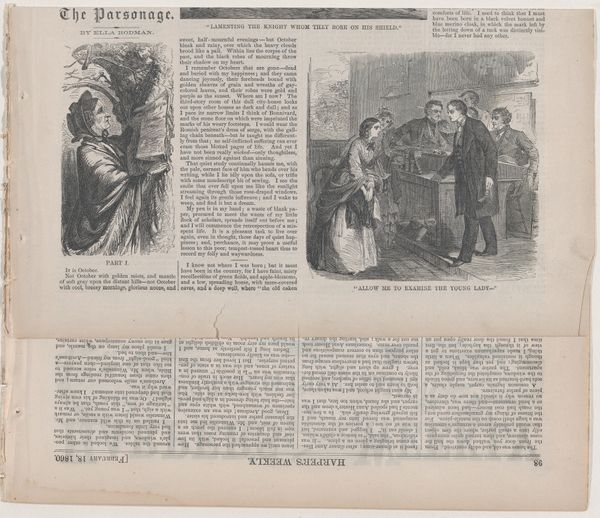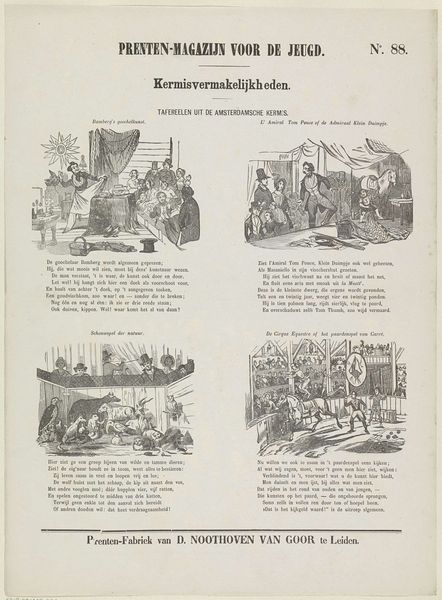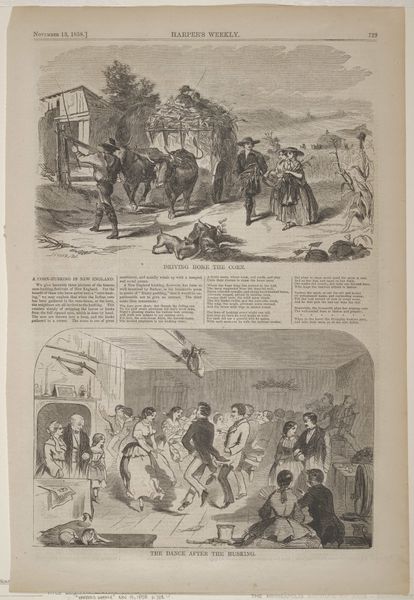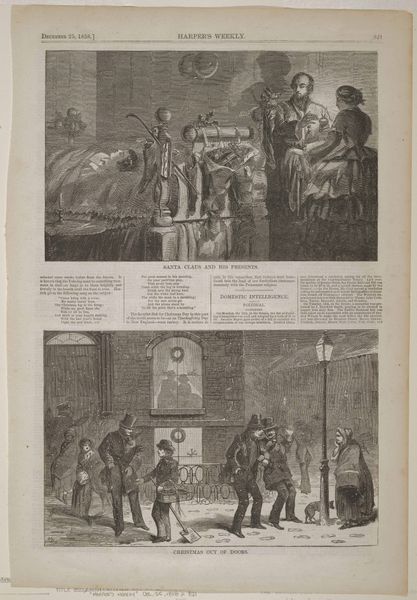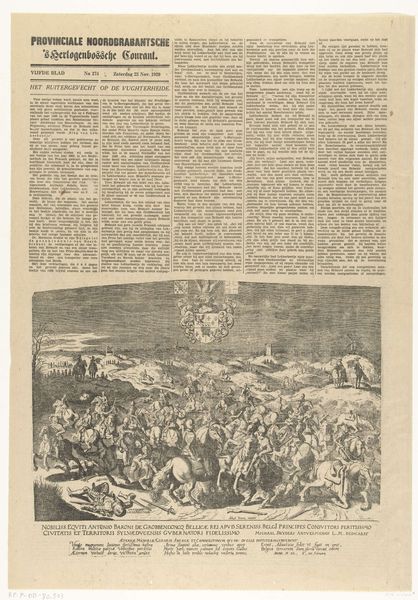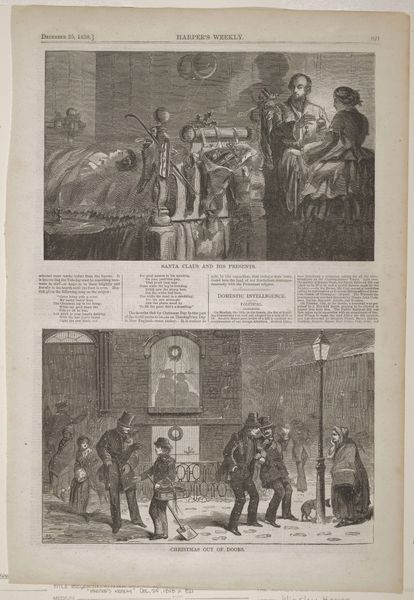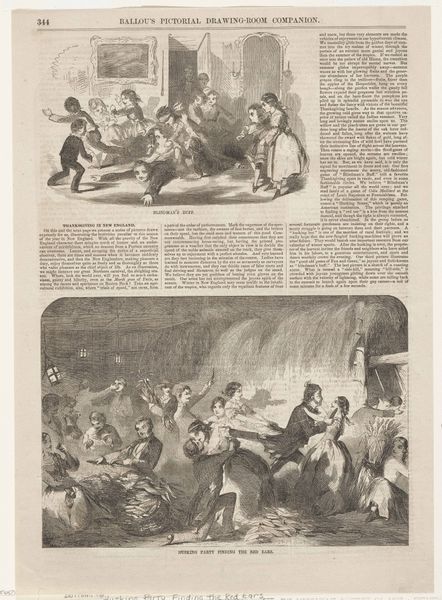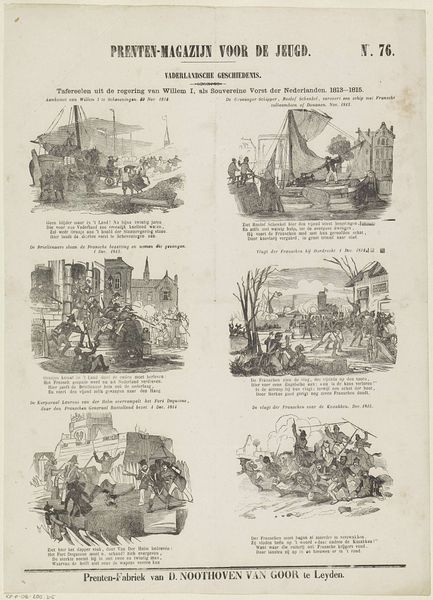
drawing, print, paper, engraving
#
drawing
# print
#
old engraving style
#
paper
#
history-painting
#
engraving
Dimensions: 395 × 269 mm
Copyright: Public Domain
Editor: So, this is Winslow Homer’s engraving, “Allow me to Examine the Young Lady,” possibly from 1860. It's printed on paper, and there's a lot going on in this composition with different scenes and text blocks filling the page, but in this particular scene it depicts a woman at a desk, she seems to be confronting some gentlemen with grim expressions. I wonder, what do you see when you look at it? Curator: I see a work deeply embedded in the social and political currents of its time, especially regarding gender roles and societal expectations. Note that it comes from *Harper’s Weekly*, a widely circulated periodical that shaped public opinion. Homer often depicted scenes of American life, but how are women positioned in those narratives? Look closely: she seems to be inspected or judged, underscoring the power dynamics inherent in courtship and marriage. How might we interpret this within the broader context of 19th-century gender inequality? Editor: I see your point, especially with the title's suggestion of examination or evaluation. But I initially thought of it as simply a business transaction due to the desk. Could we be overemphasizing gender when commerce was also central? Curator: I don't think these themes are mutually exclusive; rather, they intersect. The marriage market *is* a type of commerce. Think about the economic dependence of women during this period and how their prospects were often tied to marriage. Doesn’t the artist force us to consider whose interests are really at stake here? Editor: That definitely gives me a lot to think about – especially viewing her negotiation from this critical gendered lens. It does reframe the narrative. Curator: Exactly. Recognizing the cultural context really can reveal the work’s deeper significance. Editor: Definitely. This was a thought-provoking journey beyond the visual. Thank you.
Comments
No comments
Be the first to comment and join the conversation on the ultimate creative platform.
